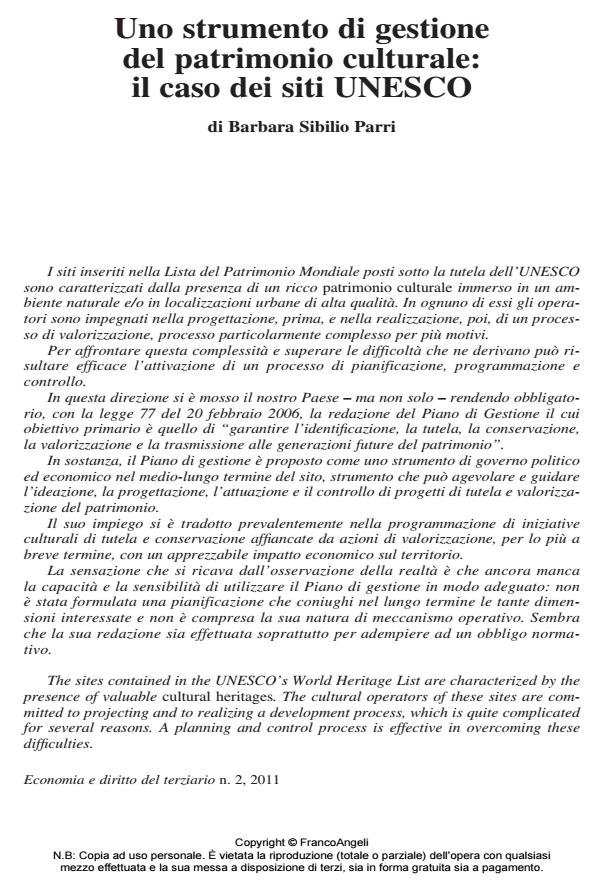Uno strumento di gestione del patrimonio culturale: il caso dei siti UNESCO
Journal title ECONOMIA E DIRITTO DEL TERZIARIO
Author/s Sibilio Parri Barbara
Publishing Year 2012 Issue 2011/2
Language Italian Pages 27 P. 307-333 File size 2058 KB
DOI 10.3280/ED2011-002006
DOI is like a bar code for intellectual property: to have more infomation
click here
Below, you can see the article first page
If you want to buy this article in PDF format, you can do it, following the instructions to buy download credits

FrancoAngeli is member of Publishers International Linking Association, Inc (PILA), a not-for-profit association which run the CrossRef service enabling links to and from online scholarly content.
The sites contained in the UNESCO’s World Heritage List are characterized by the presence of valuable cultural heritages. The cultural operators of these sites are committed to projecting and to realizing a development process, which is quite complicated for several reasons. A planning and control process is effective in overcoming these difficulties. In this framework, the law 77 of 20th February 2006 in our country has introduced the Management's Plan, which aims to "grant the identification, protection, preservation, development and transfer of the heritage to the following generations". Specifically, the Management's Plan is a political and economic management tool for the cultural site in the medium and long term. This tool can drive the design, realization and control of the protection and development projects for the national heritage. The use of the Management's Plan has mainly resulted in the planning of cultural events aimed to protection and restoration, together with development activities, mostly short term, which had a considerable economic impact on the territory. The feeling obtained by observing the reality is that the ability to use the Management's Plan in the appropriate way are still missing: a comprehensive plan that puts together all the affected subjects in the long term has not been expressed, and its controlling functioning for the management has not been understood yet. It seems that it was mainly written to accomplish with the law requirements.
Sibilio Parri Barbara, Uno strumento di gestione del patrimonio culturale: il caso dei siti UNESCO in "ECONOMIA E DIRITTO DEL TERZIARIO " 2/2011, pp 307-333, DOI: 10.3280/ED2011-002006